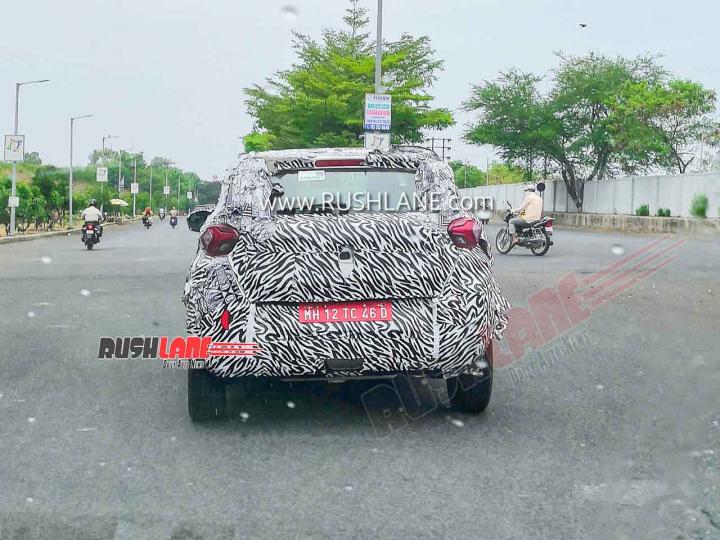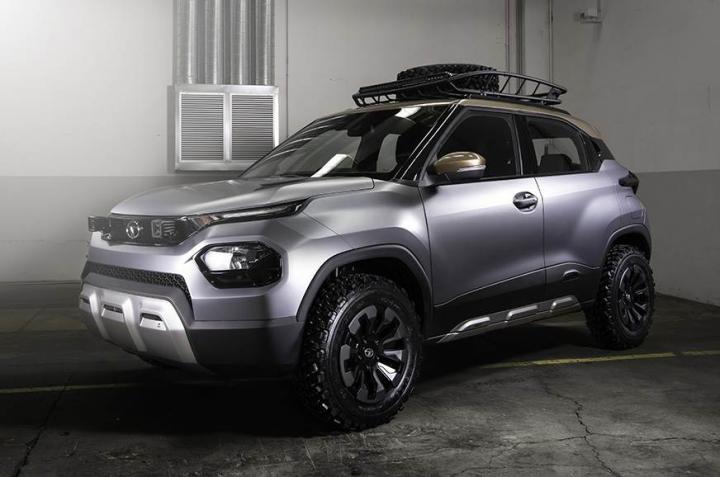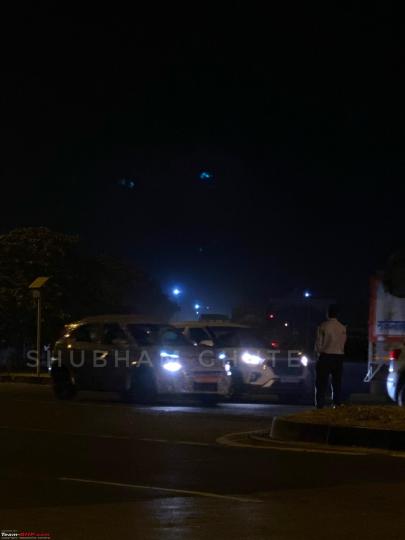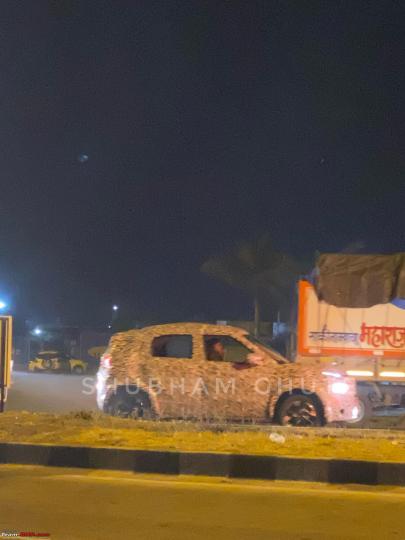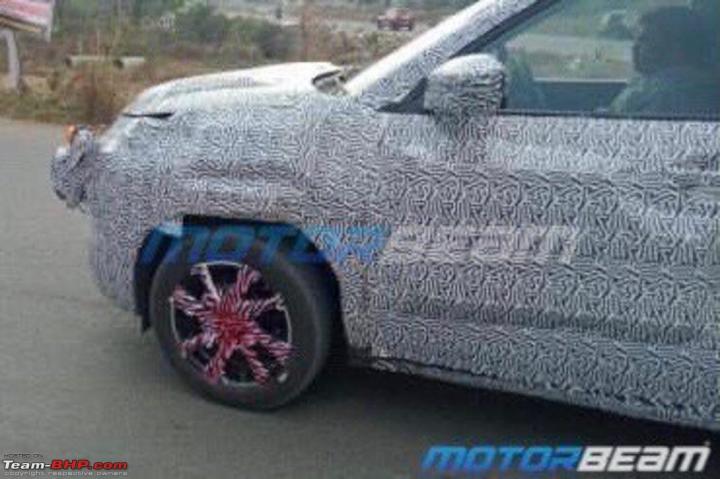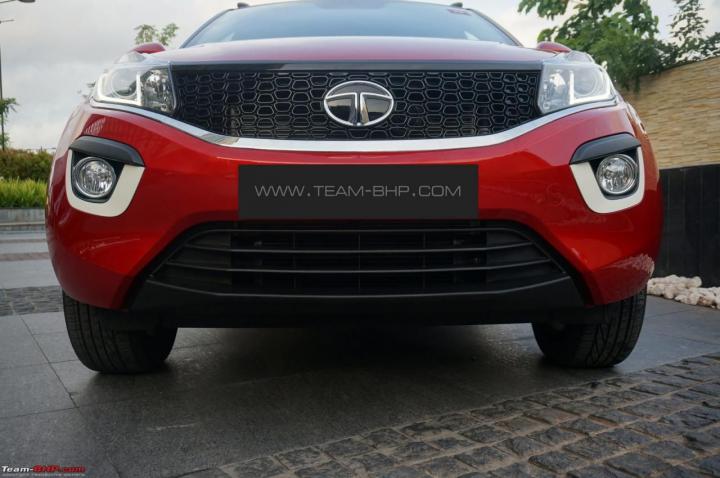News
New Tata Punch 2021: Our observations after a day of driving
The Punch should’ve had the turbo-petrol ready from day 1. When you have the ammunition in-house, why not use it??!!
Driving the Tata Punch 1.2L Petrol MT
The petrol is a 1,199cc, 3-cylinder, 12V DOHC, all-aluminium motor, which churns out 85 BHP (@ 6,000 rpm) and 113 Nm torque (@ 3,300 rpm). Let us be upfront in stating that this 1.2L NA is the weakest link in the package. It just fails to "pack a punch" above 80 - 90 km/h (city performance is acceptable, however).
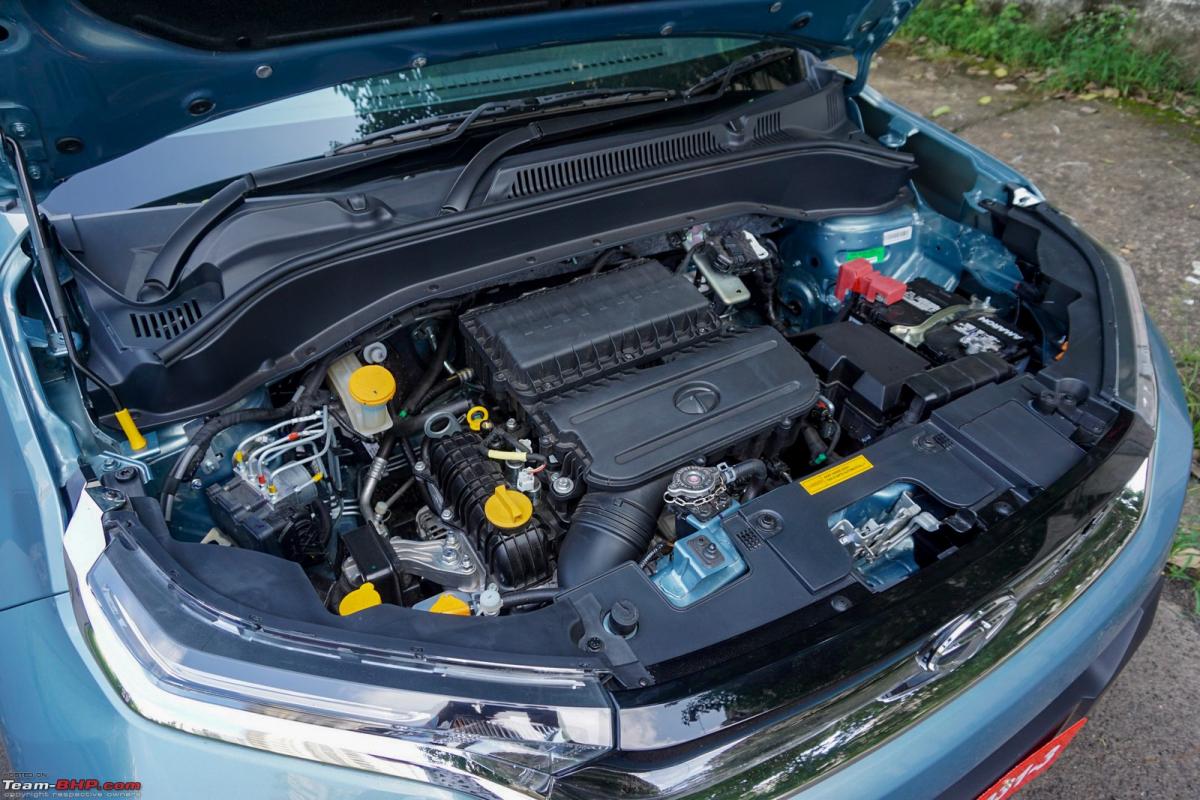
We’d mentioned it with the Altroz and it holds true for the Punch as well. Tata has royally goofed up in this department by offering just the 1.2L NA. Sure, it should be sold for the price-sensitive customers and sedate drivers, but at least as an option on the higher variants, the 1.2L turbo variant should be offered? It'll be good for Punch customers as well as for the company (fatter profit margins). Tata has said that the turbo-petrol will come if the market responds accordingly, which doesn’t make any sense. The Punch should’ve had the turbo-petrol ready from day 1. When you have the ammunition in-house, why not use it??!! We hope, like the Altroz, the Punch also eventually sees the 1.2L turbo under its hood. Else, Tata stands to lose a lot of customers who have a fatter wallet & want superior open-road performance.
Start driving and you’ll notice that the power on tap is "adequate" for city usage. The talking point is its driveability, not power. There is enough low end poke & that makes the motor practical for the city. 2nd gear over a speed-breaker is no sweat at all. You can easily potter around in 3rd gear at 40 km/h with the engine revving at ~1,750 rpm. Make no mistake = it has enough torque to carry you around town with few gear changes, albeit in a relaxed manner. You won't find the need to rev the Revotron hard as long as your driving style is sedate. GTO found the outright performance to be acceptable under 80 km/h. However, if you need to quickly close a gap in traffic, you’ll have to drop a gear or two. Not really enjoyable as the engine gets noisy (with that classic 3-cylinder thrum too) and progress can be slow! Overall, the car is a practical point A->B commuter, but it is no scorcher at all.
Highway performance is sub-par. At ~100 km/h and above, there is a whole lot of noise, yet no corresponding increase in the speedometer. On the open road, you'll need to work the engine hard to get any kind of pep out of it. Problem is, there isn't much "go" even when you do, hence we suggest you move out of the fast lane and stick to the middle ones. The pull up to 80 km/h is still acceptable, up to 100 km/h is strictly average, but post that, it drops off. The engine starts losing steam beyond 5,000 rpm and it gets loud too. Mid-range performance on the highway is not satisfactory. If you want to overtake a vehicle doing 80-100 km/h, it’s going to require planning and you’re going to have to work the gear + accelerator hard.
You will definitely miss the turbo on the open road, and with a full load of passengers on mountain roads. With 4 onboard, performance will be even more ordinary. Again, we suggest driving the 1.2L NA variant calmly in the middle lane. Compared to the butter-smooth 1.2s of Hyundai & gang, the Punch's engine sounds harsh at high revs. If you insist, it will go past 6,000 rpm. In terms of cruisability, because of the weak motor, Tata couldn’t give it gearing that’s too tall. You can see that in the cruising revs. 100 km/h is seen at ~3,000 rpm, while 120 km/h is seen at ~3,500 rpm (both of which are on the busier side).
Not a gearbox you'll brag about, not a gearbox you'll complain about. The Punch uses the same TA65 gearbox (also seen in the Indica eV2) as the Altroz, Tiago and Tigor. The 5-speed manual gearbox's throws aren't long and the shifter's operation is light and pleasant to use, although it isn’t Hyundai or VW-like slick yet. There is some notchiness to it. Its gates are well-defined though and we had no trouble slotting into the gear we wanted to engage. What you will appreciate is the clutch, which is very light and has a short travel range. It is a boon in bumper-to-bumper traffic conditions. There's even a wide, extremely usable dead pedal to rest your foot.
Noise, Vibration & Harshness (NVH)
Being a 3-cylinder engine, there’s cabin-shake when you start the car. Leave the door open and you'll see it mildly vibrating. Even on the move, you will always be aware that it’s a 3-cylinder engine. NVH is just average at low revs; the 3-cylinder sound and mild vibrations are a constant, even when driving calmly in the city. As the engine warms up, these vibes on touch points like the steering wheel & gear lever reduce, but they remain present in other areas (e.g. on the pedals, floor and ORVMs).
While engine NVH is still tolerable in the city and you’ll get used to it, on the highway, it starts getting loud + coarse above 4,500 rpm. At 5,000 rpm, not only is the motor really loud, but you can also feel 3-cylinder vibrations on the dead pedal!
Wind noise is controlled at 100 km/h. Road and tyre noise are on the higher side. Even at 80-90 km/h, road and tyre noise are audible and above 100 km/h, they are a constant.
Mileage & Fuel Economy
While Tata hasn’t revealed the fuel economy figures yet, we expect the Punch's FE to be comparable to the Altroz which has the same engine and a similar kerb weight. Eco Mode is available for those sensitive to FE and the good news is, it's useable in the city with no major drop in driveability. An idling start/stop system (which switches off the engine when it's idling to save fuel) has been provided if km/l is your thing.
Driving the Tata Punch 1.2L Petrol AMT
While the Punch MT is still fine for sedate urban commuters (those on a budget and <80 - 90 km/h), we cannot recommend the Punch AMT. Those who have never driven an automatic before will find it more liveable, but the Punch AMT simply cannot be compared to the butter-smooth Nissan Magnite or Renault Kiger CVTs, nor to the Hyundai AMTs, which use electric actuators. We’ll give Tata's AMT an overall rating of 6/10. It does offer you the convenience of an automatic at an economical price and with decent fuel efficiency. However, the AMT is extremely jerky in heavy traffic conditions. The AMT does end up confused, which definitely won't be appreciated by enthusiasts. Main advantages of the AMT are cost (to Tata & the customer), fuel economy & that it can strapped onto any MT, making it an easy solution for manufacturers.
Lift your foot off the brake pedal and the car creeps forward at an indicated speed of 10 km/h, although it feels slower than that (more like 6 - 7 km/h). In bumper to bumper traffic, you’ll find the AMT to be jerky for sure. The car moves quickly when you release the brakes & the brake pedal itself is edgy, so when you brake again (in dense traffic), it's an annoying experience. It's almost impossible to drive the AMT smoothly in bumper-to-bumper conditions. GTO enabled Eco Mode in heavy traffic just to dull the throttle response a bit and make the AMT experience smoother. You should do that too. The AMT feels better in flowing traffic at moderate speeds. Things are more acceptable in the 30 - 50 km/h commuting range than continuous 0 - 10 km/l. In terms of response times, the AMT will disappoint you if you suddenly punch the accelerator to close a gap. Response time is slow and you’ll be left wanting for more. And yes, that infamous "AMT head nod" is very much there.
On the highway, the AMT is more tolerable. Higher speeds, higher gears & less shifts make the AMT smoother on long distance journeys, but in the city (where you need an AT the most), we didn't like this AMT at all. Kickdown response times at highway speeds aren’t great, so it’s better to plan your overtakes beforehand. We recommend shifting to manual mode for overtaking on the highway.
Tata seriously needs to develop or borrow a proper automatic for use in the Punch, Altroz, Nexon, Tiago etc. For the Harrier and Safari, they borrowed a gearbox from Hyundai, which worked out really well. They need to do that for their mass market models as well - develop or borrow! These cars deserve a superior AT solution.
Suspension
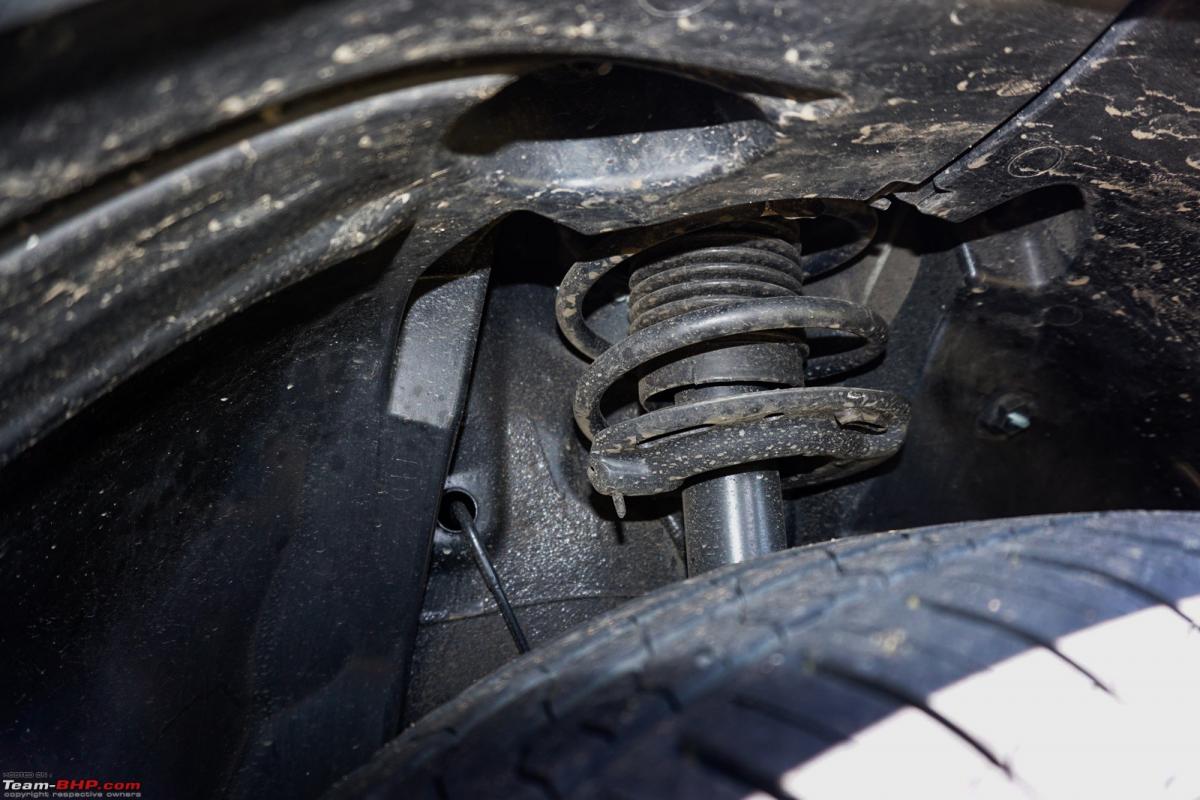
Ride Comfort
The Punch comes with a McPherson strut suspension at the front and a twist beam suspension with coil springs at the rear. The suspension tune is definitely on the firmer side here. Just like the Nexon, Tata has prioritized road manners over ride comfort. While the suspension is compliant enough, you are always aware of what kind of surface you are travelling on. The Punch can handle smaller bumps alright, but the bigger or sharper ones come in strong. All in all, you can live with the ride quality, but it’s not what we would call ‘plush’ at all. Cars like the Honda WR-V offer a far softer ride.
The 16" rims shod with 195/60 section tyres also contribute to the stiffer ride. Lower variants with the 185/70 R15 tyres will have a better ride due to taller tyre sidewalls. Further, the recommended tyre pressure is 32 PSI; you can drop it to 30 PSI only within the city. The good thing about such a suspension tune is that it doesn’t bounce around at 80-100 km/h. For a small crossover, it rides pretty nicely on the highway @ 100 km/h.
Handling & Dynamics
Suffice to say, the Punch has sorted road manners. Straight line stability is satisfactory and the car doesn’t feel nervous even at 120 km/h. Carry some speed around a long corner and the Punch holds its line well. Body roll is well-controlled for a car of this segment & the Punch moves well through the curves. What you will immediately notice when pushing the car hard is that the suspension setup & chassis can handle more than the 1.2L NA petrol has to offer. When is that turbo-petrol variant coming, Tata? Even the 195/60 R16 Apollo Alnac 4G tyres had no issue keeping up with us.
Steering
The electric power steering is light in the city and a lot of owners will appreciate that. Combined with the compact dimensions & taller seating, the Punch was easy to maneuver around Bombay. While Tata Motors hasn’t officially revealed the turning circle figure, engineers we spoke to confirmed that it’s just under 10 meters (turning radius = <5m). The steering does weigh up adequately as you gain speed on the expressway. However, one thing GTO noticed while coming down hard on the Lonavala Ghat was the steering weight being inconsistent through the corners. Sometimes it felt a little light, and sometimes it felt a little weighted. The weight & feel are both inconsistent. Further, the steering isn't particularly sharp or precise. Turning at speed feels like you’re moving it through clay! Frankly, this feels more like a Mahindra-tuned steering. Of course, the mass market won’t even know what we’re talking about, but for enthusiasts, it’s quite a boring EPS.
Braking
The Punch is equipped with disc brakes at the front and drum brakes at the rear. The brakes perform as expected. You also get cornering stability control = Tata says "CSC supports / stabilizes the vehicle during partial braking in curves by reducing pressure at the required inner wheel. This helps to reduce the probability of vehicle oversteer during cornering + braking".
Niggles & Problems
Since the Tata Punch uses a lot of components that have been in the market for a while (i.e. 1.2 NA engine and gearbox), is built on an existing platform, has loads of part sharing with other Tatas & presumably deploys an existing electronics architecture, we are hopeful it doesn’t have the kind of niggles we’ve seen other Tata owners (example, Harrier / Safari) suffer with. That being said, you should buy the extended warranty without a speck of doubt.
Continue reading the discussion on the 2021 Tata Punch on our forum.
- Tags:
- Indian
- Review
- Tata Punch
- Hornbill
News
2021 Tata Punch Review : 8 Pros & 8 Cons
One of the first things GTO, Aditya and I agreed on was that the Punch looks sexy! Models like these prove that you don't need to spend big money to have style.
Tata Punch Pros
- Snazzy styling! We love the mini-Harrier face and tight rear end
- Well-designed & practical cabin with enough space for 4 adults
- 366-liter boot is accommodating
- 1.2L NA petrol offers good driveability in the city. Performance is acceptable <90 kmph
- Sorted road manners & reassuring high speed stability
- Enjoyable Harman 6-speaker ICE. One of the better systems in this segment
- Features such as auto headlamps & wipers, cruise control, Traction Pro (AMT), cooled glovebox…with factory customization packs too
- Uses the well-rated platform of the Altroz. Safety package includes dual airbags, CSC, brake sway control, ISOFIX etc.
Tata Punch Cons
- 1.2L NA petrol’s highway performance is weak. At 100 kmph & up, more noise than action
- Suspension has a firm tune (R16 variants). It is compliant & liveable, but you do feel bad roads
- Jerky and slow AMT gearbox when competitors offer you smoother CVTs and torque converters
- 3-cylinder petrol cannot match the competition’s 4-cylinders in refinement & NVH
- No turbo petrol or diesel option. Period. Rivals & other Tata cars offer both
- Cabin width makes 4 adults welcome, not 5
- Some missing goodies such as an auto-dimming IRVM, splitting rear seat, rear AC vents, full-size spare…
- Tata's after-sales service quality is a hit or miss. Remains a gamble
Read Team-BHP's Detailed Tata Punch Review.
- Tags:
- Indian
- Tata Punch
- Hornbill
- Review
News
Tata aims for 10% market share with Safari, HBX launch
By mid-2021, the carmaker will launch the HBX crossover, which is expected to boost sales even further.
With the launch of the HBX crossover, Tata Motors hopes to increase its market share in the passenger vehicle segment from the current 6-7% to 10% by the end of the next fiscal.
At present, utility vehicles (UVs) make up 40% of Tata Motors' passenger vehicle sales. With the new Safari in the market, this figure is expected to rise. By mid-2021, the carmaker will launch the HBX crossover, which is expected to boost sales even further.
The HBX crossover is likely to be offered with a 1.2-litre petrol engine producing 85 BHP and 113 Nm. Higher variants might get a turbocharged 1.2-litre motor. While a 5-speed manual transmission will be offered as standard, the car will also get a 5-speed AMT option.
In terms of its design, the HBX is based on Tata's Impact 2.0 philosophy which was popularized by the Harrier. The crossover gets a similar front fascia with slim LED daytime running lights and headlamps positioned lower down on the bumper.
Overall, the HBX is expected to turn out to be an attractive little pseudo SUV. But, it will soon face competition from Hyundai, which is also developing a compact crossover dubbed the AX1.
Source: ETAuto
- Tags:
- Indian
- HBX Concept
- Hornbill
- Compact SUV
News
Rumour: Tata Hornbill (H2X) launch in May 2021
The SUV is based on the HBX Concept and could be launched in May 2021.
We had earlier reported that the launch of the Tata Hornbill (H2X) SUV has been pushed to FY2021. It is now said that the sub-4 meter SUV could be launched in May 2021.
The sub-4m SUV will be based on the HBX concept showcased at the 2020 Auto Expo and is likely to feature Tata's Impact 2.0 design language. It is expected to get slim LED daytime running lights and headlamp clusters positioned on the front bumper, oval tail lamps with Y-shaped brake lights.
The H2X could be powered by a 1.2-litre, naturally aspirated petrol engine. Higher variants could get a 1.2-litre turbo petrol unit, while transmission options might include a 5-speed manual gearbox and 5-speed automated manual transmission (AMT).
Thanks to BHPian anandseth01 for sharing this with other enthusiasts.
- Tags:
- Indian
- Hornbill
- H2X Concept
News
More images: Tata H2X sub-4 meter SUV
The Tata H2X sub-4 meter SUV has been spotted testing with what appear to be production-spec tail lamp clusters.
Tata's upcoming sub-4 meter SUV is based on the HBX concept that was showcased at the 2020 Auto Expo. The SUV features Tata's Impact 2.0 design language. The test car has oval tail lamps with Y-shaped brake lights. The tail lamp clusters house diamond shaped turn indicators as well.
The H2X test mule has a high-mounted stop lamp positioned above the rear windshield. It also appears to have reflectors on the rear bumpers.
The H2X was supposed to be launched in the second half of this year. However, reports suggest that the launch might have been pushed to FY2021.
Source
- Tags:
- Indian
- H2X Concept
- Hornbill
- spy shots
News
Rumour: Tata Hornbill (H2X) launch pushed back to FY2021
According to a media report, Tata Motors has pushed back the launch of the Hornbill (H2X) sub-4 meter SUV to FY2021. The SUV was supposed to be launched in the second half of this year.
The design of the H2X is likely to be inspired by the HBX Concept that was showcased at the 2020 Auto Expo. It could get slim LED daytime running lights and headlamp clusters positioned on the front bumper. Test mules of the car have been seen sporting dual-tone alloy wheels.
The H2X could be powered by a 1.2-litre, naturally aspirated petrol engine. Higher variants could get a 1.2-litre turbo petrol unit, while transmission options might include a 5-speed manual gearbox and 5-speed automated manual transmission (AMT).
- Tags:
- Indian
- H2X Concept
- HBX Concept
- Hornbill
News
Tata HBX Concept @ Auto Expo 2020
Big shoutout to Vid6639 for shooting these pictures & his coverage of the Auto Expo. Thanks for sharing, man!
Tata Motors had the HBX Concept on display at the Auto Expo 2020. Click here to read our report on the same.
News
Tata Hornbill (H2X) with dual-tone alloys spied
Thanks to ShubhamGhute for sharing these images with other enthusiasts!
The Tata Hornbill sub-4 meter SUV, also known as the H2X has been spotted testing near Pune.
The latest spy images suggest that the sub-4 meter SUV could get dual-tone alloy wheels. The car also appears to have a similar front fascia as the Harrier. It has slim LED daytime running lights and headlamp clusters positioned on the front bumper. It has a short rear overhang.
The new sub-4 meter SUV is expected to be based on the Advanced Modular Platform (AMP) that is likely to underpin other upcoming Tata cars. It could use the 1.2-litre, naturally aspirated petrol engine from the Tiago paired with either a 5-speed manual gearbox or a 5-speed automated manual transmission.
News
Tata H2X / Hornbill SUV spied
Tata Motors' upcoming sub-4 meter SUV codenamed: H2X / Hornbill has been spied testing.
The spy images suggest that the vehicle's styling could be based on the H2X concept, which was showcased at the 2019 Geneva Motor Show.
The car appears to have squared-off wheel arches. The tail lights look similar to those seen on the concept car. It has a rear windshield wiper and the door handles for the rear doors are likely to be positioned on the C-pillar. The test car does not have a split rear spoiler like the H2X concept.
The new sub-4 meter SUV is expected to be based on the Advanced Modular Platform (AMP) that is likely to underpin other upcoming Tata cars. It could use the 1.2-litre, naturally aspirated petrol engine from the Tiago paired with either a 5-speed manual gearbox or a 5-speed automated manual transmission.
- Tags:
- Indian
- H2X Concept
- Hornbill
- Compact SUV
News
Tata Hornbill SUV might be a petrol-only offering
Thanks to BHPian RavenAvi for sharing this information with other enthusiasts!
It is rumoured that Tata Motors' micro-SUV (Codenamed X445 / Hornbill) is likely to be offered with a petrol engine only. Apparently, all prototypes of the car inside the Tata Motors plant are powered by petrol engines, suggesting it might not get a diesel engine option.
The Tata Hornbill is expected to be based on the Advanced Modular Platform (AMP) that is likely to underpin other upcoming Tata cars. The Hornbill could use the 1.2-litre, naturally aspirated petrol engine from the Tiago paired with either a 5-speed manual gearbox or a 5-speed automated manual transmission.
The Tata Hornbill is rumoured to be scheduled for launch sometime in 2020-21.
- Tags:
- Indian
- Hornbill
- X445
- Compact SUV
Pages












.jpg)

